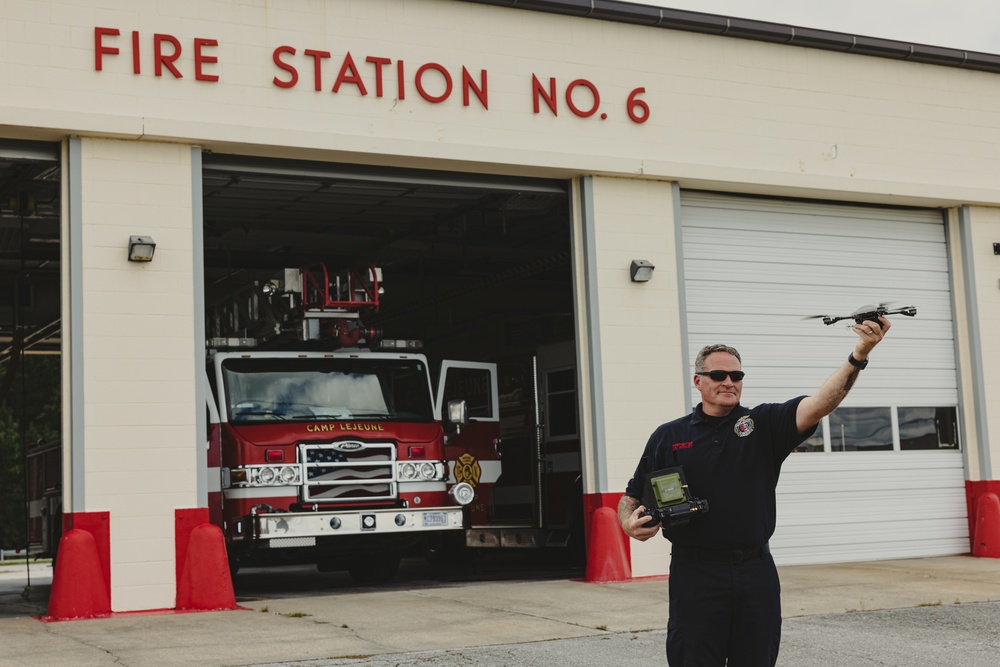Revolutionary Search and Rescue: The Impact of sUAS Technology at Camp Lejeune
On July 9, 2024, an impressive feat of technology and teamwork culminated in a life-saving operation by the Camp Lejeune Fire and Emergency Services Division (FESD). During a critical search for a missing child on Marine Corps Base (MCB) Camp Lejeune in North Carolina, the rapid deployment of small Unmanned Aerial Systems (sUAS) proved essential. Utilizing their newly-acquired drones, the response team not only increased operational efficiency but also showcased the significant advancements in aerial surveillance capabilities.
Transitioning to Drone Technology
Recognizing the untapped potential of drone technology, the U.S. Marine Corps has initiated a strategic transition of sUAS from traditional fleet operations to installation commands. This shift, led by Lt. Col. Frank M. Colpo, the director of Aviation at Marine Corps Installation Command, emphasizes the repurposing of these drones to improve mission effectiveness across diverse installation scenarios. The sUAS program aims to enhance various operational missions, including emergency response, accident assessments, natural disaster management, and search and rescue efforts.
Training for Success
Before the successful child search operation, FESD personnel were equipped through a comprehensive sUAS training course. On February 5, 2024, three firefighters participated in this training, conducted by the Training and Logistics Support Activity-East. It was here that they learned to integrate sUAS technology into various emergency scenarios, setting the stage for future operations.
The training program emphasized not only the operational deployment of the drones but also their application in real-world situations such as wildfire management and hazardous material incidents. This advanced training ensured that FESD firefighters were not only familiar with drone technology but also adept at using it to save lives under pressure.
A Real-Life Application: The Missing Child
The true effectiveness of the sUAS technology was tested in early July during a critically urgent search for a missing child. According to firefighter Jabbock Ackley, the deployment of the sUAS was impressively efficient—launched within just eight minutes, the drone provided vital real-time data that enabled search teams to locate the child within approximately 45 minutes.
The drone proved invaluable, covering large areas quickly and delivering aerial perspectives that would have otherwise taken much longer to obtain. Lt. Attwood Mobley III from Fire Station 3 underscored the significant impact these drones could have on operational efficiency, expressing optimism about their use in various emergency situations.
Enhanced Capabilities for the Future
Mobley highlighted one of the most advanced features of the sUAS: the ability to pick up heat signatures using a flare capability. This feature is particularly vital in situations such as search and rescue missions, allowing the teams to locate individuals even in challenging environments, including open water. The versatility of the sUAS technology has opened new avenues for enhancing situational awareness and improving response times.
The benefits of this technology extend beyond immediate search and rescue missions. Following the successful operation in July, the FESD aims to further integrate sUAS capabilities into their training exercises, ensuring their personnel are well-prepared for future emergencies.
Community Impact and Reassurance
The use of drone technology has not only improved operational capabilities but has also provided the local community with peace of mind. As Mobley noted, the potential of having aerial surveillance capabilities reassures the community about their safety, especially during critical incidents involving missing persons. This assurance is invaluable, as it enhances trust and confidence in the emergency services available to them.
The sUAS program at Camp Lejeune represents a forward-thinking approach to emergency response, merging modern technology with traditional rescue efforts. With ongoing training and integration of drone capabilities, the FESD continues to enhance its readiness for a future filled with challenges that demand swift and effective responses.
